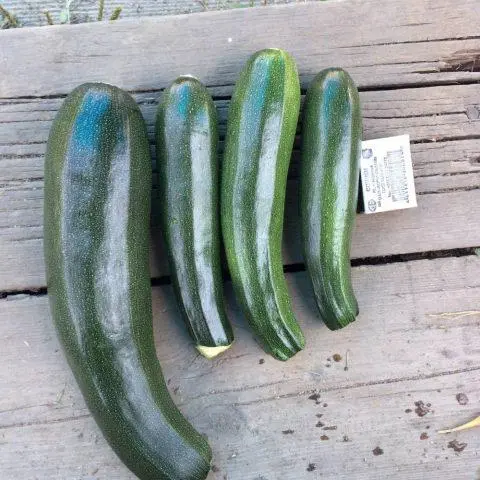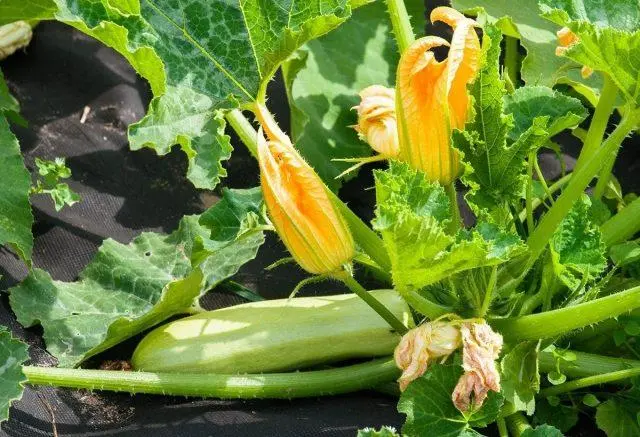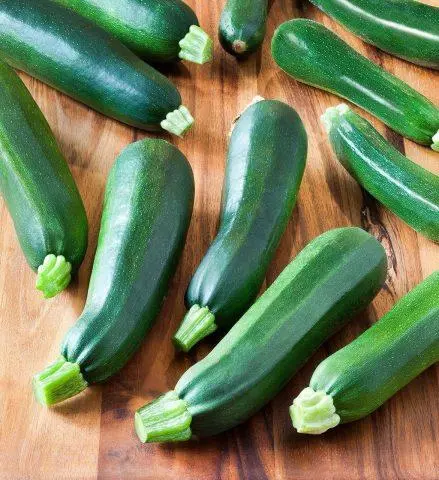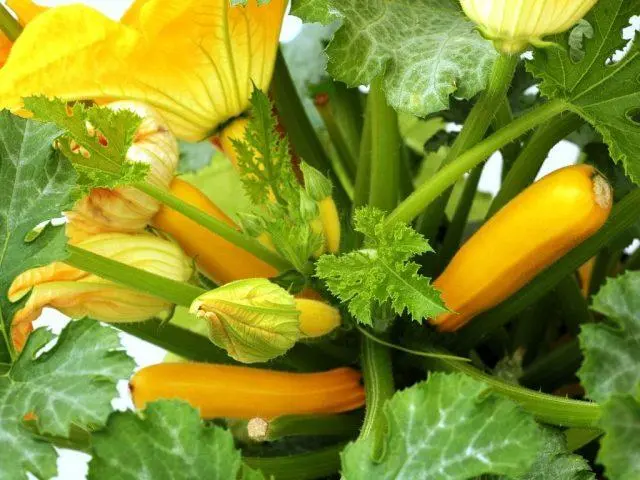Contents
Growing zucchini in bags is an unusual way of planting vegetables that gardeners practice in order to get an early vegetable harvest. It is also used when the plot is small, and you want to grow many different crops. After all, such a bed can be placed even in places with infertile soil and at the same time get a good harvest. For the idea to be successful, it is necessary to study the features of growing zucchini in bags. Otherwise, the end result may be radically different from the desired.

This method of planting a vegetable is suitable for the central and northern regions of the country.
Is it possible to grow zucchini in bags
Zucchini can be grown in bags, like cucumbers and tomatoes. Then the crop grows of excellent quality, no worse than in open ground, but at the same time, such a bed does not take up much space on the site. But for this you need to stock up on tight bags, with a volume of at least 120 liters, because, as you know, zucchini belong to the category of large-sized ones, and they need adequate nutrition throughout the growing season.
The main advantages of growing vegetables in bags:
- early fruiting;
- no need for regular weeding;
- the possibility of placement in places not intended for landing;
- rational use of the area of the site;
- ease of care and harvest.
However, to obtain a good crop of zucchini using this method, it is necessary to carefully prepare the substrate for filling bags, since it will not be possible to change its composition during the season. Therefore, you need to take into account the basic requirements in advance so that there are no problems in the future.
Suitable varieties
To grow zucchini in bags, you must initially choose the right varieties. Experienced gardeners recommend giving preference to bushy forms of culture with a compact size, since lash plants will hang down and, under the weight of the fruit, their shoots will break.
Also, when choosing, you need to pay attention to the ripening period of pumpkins. Early maturing varieties or hybrids are suitable for harvesting an early harvest. And in order to obtain fruits throughout the season, it is recommended to plant species of different ripening periods.
The most suitable crop varieties for growing in bags:
- Aeronaut. An early ripe zucchini with a growing season of 35 days. The fruits are aligned, one-dimensional, 18-20 cm long. Their average weight is 1,5 kg. The peel is thin, does not coarsen for a long time, a dark green hue. The pulp is white, delicate texture, dense.

Zucchini Aeronaut is suitable for diet food
- Dinar. A super early hybrid, in which the first squash ripens on days 38-40, and the fruiting period is two months. Bushes are compact in size, with short internodes. Fruits of a light green shade, elongated-cylindrical shape. On the surface they have a slight ribbing, especially in the area of the stalk. The pulp is dense, crispy, juicy.

Dinar is suitable for processing and conservation
- Pharaoh. The variety was registered in 1999 and recommended for cultivation in the North-West region. The length of its main stem is 47-50 cm. Pumpkins of the Pharaoh variety are cylindrical, smooth, leveled, weighing about 800 g. The peel is of medium thickness, dark green with small light dots. The yield is 6,7-15,5 kg per square meter. m.

Zucchini Pharaoh is resistant to temperature extremes
- Golden. A time-tested variety, which received registration in the State Register in the 80s of the last century. It begins to bear fruit on the 48-50th day from the moment of planting. Zucchini of a bright yellow hue, up to 15 cm long and weighing about 0,5 kg. The skin is thick and smooth. The crop tolerates transportation and long-term storage well. The pulp is creamy, dense, tender, juicy. General purpose variety.

The yield of Zolotinka reaches 6-8 kg
Preparing for planting
To successfully grow zucchini in bags in the open field, you need to properly prepare the soil and seeds. The volume of the future harvest directly depends on this.
First of all, it is necessary to fill the bags with dry leaves, grass, paper tops. The organic layer should be 1/3 of the total volume. It must be well tamped and poured abundantly with Baikal solution. After that, it is recommended to close the bags and keep them in a sunny place for ten days, which will activate the transformation of organic matter into a nutrient layer. In addition, in the process of this, energy will be released, which will create the effect of a warm bed and accelerate the vegetation and fruiting of zucchini.
After that, it is necessary to pour a layer on top of the organic matter to the top of the bag of nutrient soil mixture. To grow zucchini, it must have good moisture and air permeability and have a neutral level of acidity. Therefore, it is recommended to mix sod, humus, leafy soil in the same proportion. Additionally, 200 g of wood ash must be added to the substrate and mixed thoroughly.
For 2-3 days, the soil for growing zucchini should be watered with Fitosporin solution to disinfect it. Immediately before planting, it is recommended to make holes in the bags to drain excess water during irrigation. This will eliminate the possibility of root rot.
Zucchini seeds for growing in bags need the same preparation as when planting in open ground or a greenhouse. Therefore, a day before the procedure, they must be soaked in a solution of Zircon or Epin for 10-12 hours. After that, dip the seeds for 15 minutes in the working liquid of potassium permanganate, and then wash with plain water and dry slightly. After that, you can start landing.
How to plant zucchini in soil bags
The successful cultivation of zucchini in bags in the garden directly depends on how well the planting is carried out. Therefore, it is worth familiarizing yourself with the features of this procedure in advance.
You can start sowing when the air temperature warms up to +15 ° C. Therefore, the favorable period is the end of April, the beginning of May. In this case, the lower layer of organic matter will not let the cold coming from the ground through, which guarantees a friendly emergence of seedlings.
In the center of the bag, you need to make a small hole 2 cm deep, then water it, put two zucchini seeds and sprinkle them with earth. After that, cover the landing site with a plastic bottle to protect against possible frosts.
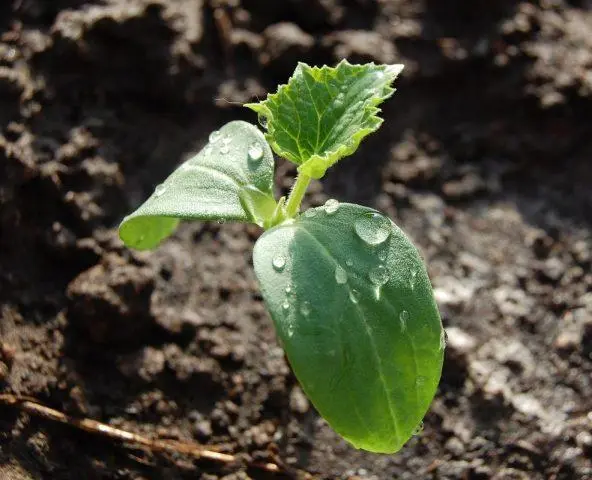
Under favorable conditions, zucchini germinate in 3-5 days
Further Care
Growing zucchini in sugar bags does not cause much trouble, just follow the standard rules of agricultural technology. First of all, it is necessary to organize regular watering, since this vegetable is sensitive to a lack of moisture in the soil. When growing zucchini, you need to wet the soil in bags 2-3 times a week, but it is recommended to take into account weather conditions. And to preserve moisture in hot periods, you need to put a layer of fresh grass on top of the soil. This will also allow air to reach the roots.
At the end of the flowering of zucchini when grown in bags, all shoots of a vegetable without an ovary must be cut off. This will redirect the forces of the plant to the maturation of the shoots and the nutrition of the leaves. Zucchini grown in bags do not need top dressing if humus and wood ash were initially added to the substrate.
As the fruits form, when growing zucchini in bags, it is recommended to put cardboard or tree bark under them. This helps prevent damage to the crop when it comes into contact with damp soil, as well as protecting against slugs and snails.
Harvesting
When growing zucchini in bags, you need to harvest as the fruit grows. For stewing, marinating, preparing salads, it is recommended to cut fruits 15-20 cm long with a delicate skin. And if it is necessary to save the crop for a long time, the harvest should be carried out when the skin of the vegetable becomes thick and hard, and when tapped on it, a dull sound is heard.
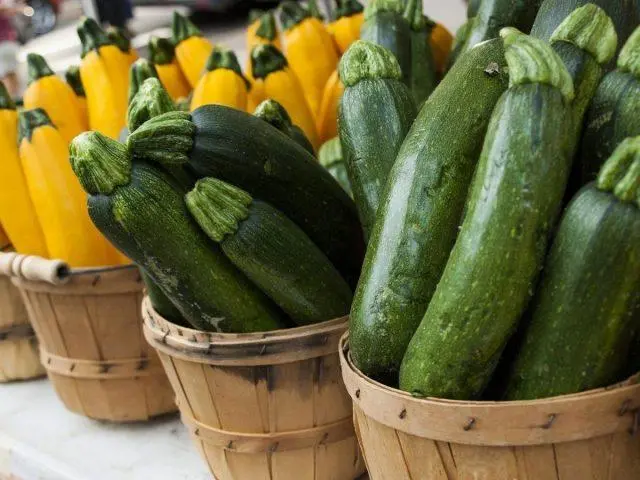
You need to cut the fruits with a stalk 5-7 cm long
Conclusion
Growing zucchini in bags is quite an exciting activity that allows you to get a crop even in the absence of a free bed in your garden or cottage. However, it should be understood that this vegetable will not be able to fully bear fruit in low light and watering, so you need to provide it with the necessary conditions for development. And then the first pumpkins can be harvested two weeks earlier than when grown in open ground.










